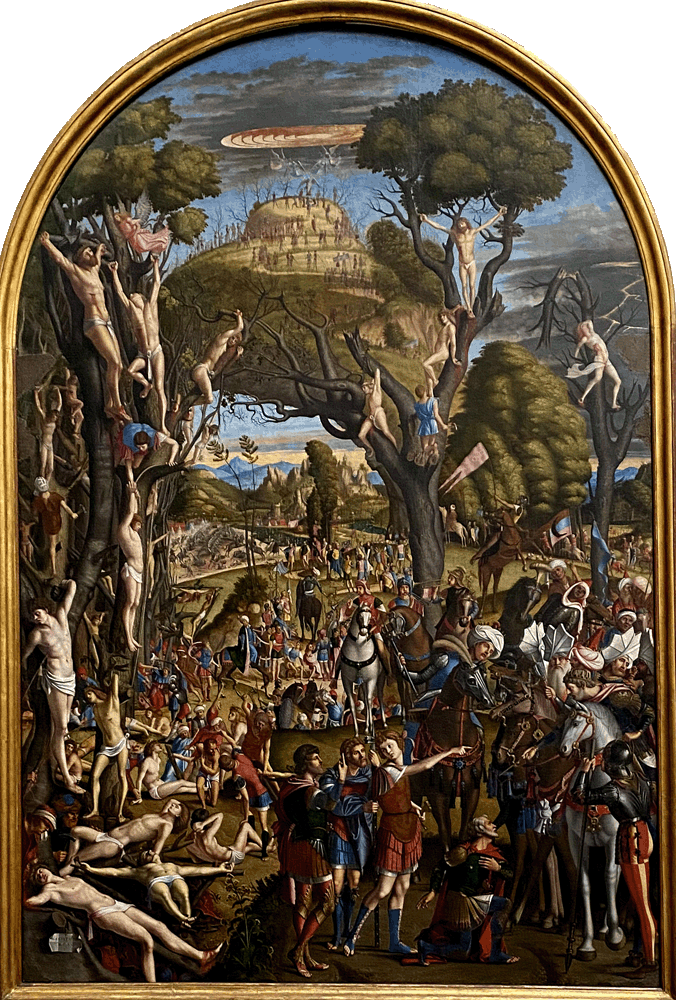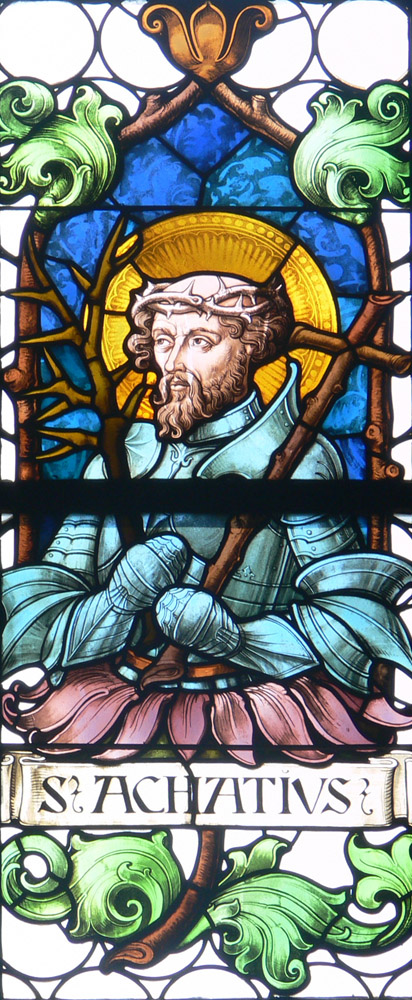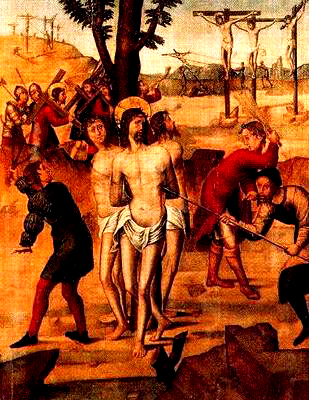THE STORY
In the narrative the Emperors Hadrian and Antoninus send an army of 9,000 against rebels in the East. The rebels at first prevail against the imperial troops, but their commander Acathius rallies them and proposes that they sacrifice to the gods to gain victory. At that moment an angel appears and tells them they can prevail if they come to believe in the true God instead. They do, and then defeat the rebels handily. The angel transfers them en masse to the top of Mount Ararat and explains that after three days the emperors will hear of their conversion and put them to death for it, but they will then go to Heaven. They then confess their sins and wait.The Emperors do hear of the conversions and angrily summon the nine thousand from Mount Ararat. They demand that the soldiers sacrifice to the gods or perish. First Acathius, then his lieutenant Eliades, then a number of their companions in turn declare that they have no fear of the rulers because they trust in God. The emperors order them stoned, but the stones miraculously reverse course upon the men who threw them, and their hands wither up while the earth quakes beneath them. These miracles impress a magister militum named Theodorus, who embraces the Christian faith along with his 1,000 men, bringing the number of converts to an even ten thousand. The emperors then have them all scourged, forced to run barefoot over a field strewn with nails, and crowned with thorns.
Finally, after impassioned professions of faith by Acathius and his drill sergeant Carterius, they are all taken back to Mount Ararat and crucified on trees. The angels bury their bodies and take their souls to Heaven.
THE IMAGES
The crucifixion on Mount Ararat was painted by Carpaccio (first picture on the right) and others, and there are a good many portraits of St. Acathius in various churches in the West. In the portraits he is usually dressed as a Roman or contemporary soldier. His attribute is a leafless tree branch, a synecdoche for the trees on which he and his companions were crucified. In the second picture at right his crown of thorns serves as a secondary attribute.In both the portraits and the narrative images Acathius is sometimes pictured with two of his officers, as in the third picture at right and this New Mexican painting. One of these two would most likely be Eliades, who has a prominent role; the other is probably Carterius, who is named with Acathius and Eliades at the beginning of the story.
Prepared in 2021 by Richard Stracke, Emeritus Professor of English, Augusta University.
HOME PAGE

Carpaccio, The Crucifixion and the Apotheosis of the Ten Thousand Martyrs of Mount Ararat. The three young men in the foreground may be Acathius, Eliades, and possibly Carterius. (See the description page.)

Portrait of St. Acathius in a German church, with the leafless branch and several other references to his story. (See the description page.)

The scourging of Acathius and two of his officers, with the crucifixions in the background. (See the description page.)
MORE IMAGES
- 16th century: This painting of a young dandy holding a leafless branch seems to confuse our Acathius the commander at Ararat with another Acathius, "the Centurion," who was said to be a young man of 25.
NAMES
- Also spelled Achatius, Agathius, Acacius
DATES
- Hadrian and Antoninus ruled in the second century.
BIOGRAPHY
- In Passione Decem Millium Martyrum, Acta Sanctorum, June vol. 4, 182-88.
- A 1498 printed edition of the same work is in available online at the Deutsche Forschungsgemeinschaft website, retrieved 2020-12-04.
NOTES
1 Acta Sanctorum, June vol. 4, 175-188.